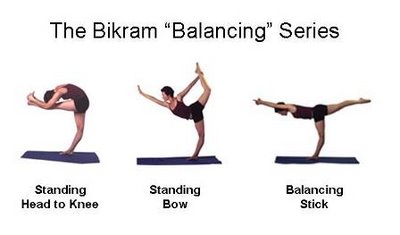Reader "Mobius" sends in the following question:
I'm in LA and a regular reader of your wonderful blog (Mitch: Flattery will get you everywhere). I was hoping to get your help in finding a good place to get martial arts training in the area. The one place I'm talking to is asking ~$350 for 3 months, 2-times/week. I don't even know what the avg price is around the area and your help would be very useful.
While this question is specific to SoCal, here are some tips that everyone should use when looking for a martial arts studio:
1. Technique - The first step in picking up martial arts is to decide which technique you want to study. There are literally dozens of martial arts techniques, and
this web site has summaries on most of them. I take Tae Kwon Do, which is from Korea, but there are techniques from Japan, China, and even some home grown U.S. techniques.
For deciding which technique to pursue, I would answer two questions: what do you want to get out of the sport, and what are you physically suited for? For me, I wanted to have an exercise regimen that would help me lose weight, which means I needed something with lots of movement and kicking. I decided I wanted to do this even though - at the time - I wasn't very suited for kicking since I had low flexibility. This means that my learning curve would be higher in TKD than other techniques where I would be more "natural".
I started off not very good, but my body adapted - and is still adapting - for increased flexibility. At first I could kick only about waist high, but can now kick at head level. It just means that it took me more time to get there than others who walked into the dojong with natural flexibility.
In contrast, if you wanted something that wasn't too strenuous, and would actually be more helpful for self-defense, a "grappling" martial art like Aikido or Hapkido would be ideal. Lots of older people take these styles since there is little strenuous movement, no attacking, and little if any kicking. And as "defensive" arts, they are actually more likely to come in handy in a back alley than a TKD spinning heal kick.
2. Cost - Here is what I look for: what does a membership cost at the local 24 Hour Fitness?
As noted above, I see my TKD class as an exercise regimen, so this is a good comparison. However, I also have developed friendships with both my instructors and classmates, and the dojong is actually a place to hang out and talk, as well as exercise, so it is also like a "club" in many respects.
My dojong works like 24 Hour Fitness in that they put me on a yearly contract and charge my credit card every month, which I find pretty convenient. I pay a yearly initiation fee and $110 a month, which is about the same as you are being quoted. The only difference is that my price is "officially" for three classes a week, although I usually go four or five - they don't charge extra for the few of us that come more often.
The other thing to look out for are uniforms and rank tests. Usually for a "intro course" a uniform (gui in Japanese or dobok in Korean) is thrown in, so I would negotiate that in if it isn't in your current offer. If you need more than one uniform (I do - I sweat like a pig), find out if you have to buy uniforms from the school (with their logo) or can save a little and get it on-line.
Most schools charge for rank tests, and this usually varies on the level of the test. For example, at my school the first rank test (yellow belt) is a $30 or $40 test fee. Down the road when you are ready for Black Belt, it is on the order of $300. Since I see this as my "hobby", I just budget for these things, but it is something to keep in mind.
3. Reputation - The last thing I would look for in a school is the reputation and caliber of the school. Who owns it? Who actually teaches the courses? Is it a "belt factory" where they just churn people through as a business, or are they really serious about teaching both the physical and mental aspects of the martial arts? What size are the classes you would be in and what is the instructor/student ratio? For the day classes I take, there are usually only 3-5 students, so I get great workouts and individual attention. In fact, on some days when everyone else is busy, I get private classes.
This is a hard call, and is something you will have to ask current students about and talk to the people who work there. Note that many martial arts schools get the majority of their revenue from kids (i.e. sub-teens), so make sure that you are in a class that is reserved for adults. You don't want to get into a situation like Seinfeld's Kramer, where he was the only adult in his karate class.
The thing to remember is that if you do start a school and decide it isn't working for you, don't give up - try another. Chances are there are dozens of schools from a variety of techniques near your home and one of them will be just right for you.
Note: This post will be cross-post on
KarateTraining.org on March 31.



 Just Over Two Days to Go
Just Over Two Days to Go




